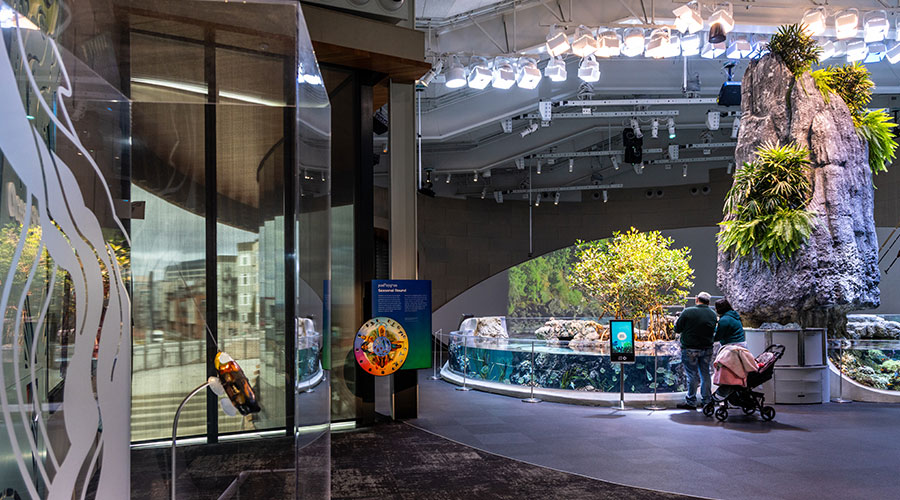Daylighting Controls Are Becoming Less Complicated, More Productive
In the past, daylighting controls got mixed reviews, with many lighting maintenance contractors complaining that such systems might be disconnected within a year due to occupant complaints. Changes to both design and cost are now making application of that option less complicated and more productive. While early systems included only indoor light sensors for controlling fixture output, today's designs include outdoor sensors (and appropriate control software) that avoid changes in lighting output due, for example, to a passing cloud. Greater compatibility among sensors, dimmers and dimming ballasts has addressed issues with linearity in control.
A drop in the cost of dimming ballasts (to as low as about $30) has also helped, with remotely controlled units offering a variety of cost-cutting options.
- Task tuning allows adjustment of illumination levels to satisfy activity in a space. In one case, a school library was converted to a cafeteria area where a lower light level was acceptable, and changes were made without any need to touch the fixtures or lamps.
- Lumen maintenance (i.e., countering lamp and dirt depreciation by slightly raising lamp output) also becomes feasible. A good lighting design assumes such depreciation so that, even at the end of a lamp's useful life, sufficient illumination is present. When new lamps are installed, however, that strategy results in a higher-than-needed light level, thus wasting energy. Significant savings can be achieved by slightly dimming lamps as part of relamping, and then raising their output as they age.
- Automated demand response may be accomplished using dimmable ballasts when light levels can be briefly reduced (up to 30 percent) without causing complaints. Several manufacturers now offer ballasts that provide automated demand-response capability to existing fixtures using wireless or PLC communication, merely by changing ballasts and adding central control units at the lighting breaker panels. Because they allow a distinct second lighting level, automated demand-response ballasts may also create bi-level lighting when that is required by code or desired for other reasons (e.g., when re-stocking or cleaning).
A Checkered Reputation?
Occupancy sensors once had a checkered reputation, with occupants occasionally needing to wave their arms to keep lights on. To respond to such issues, today's sensors have built-in "learning" capability that resets sensitivity (and perhaps cycle time) so they are more occupant-friendly. To increase savings and occupant control, vacancy sensors (which are manually turned on rather than coming on when one enters a room) are now available from many manufacturers. Such units greatly reduce false activation as people pass by a doorway, and leave lights off unless an occupant wants them on. Some sensors are also wireless, allowing ceiling units to be easily installed (and moved) as space use and layouts change.
Many fixtures (including LED, fluorescent and HID) may now be purchased with controls integrated into them. Both occupancy and lighting sensors are available. Such units may be most appropriate in stairwells, hallways and warehouse lanes where views are not blocked by partitions or other obstructions. Stairwell units are designed to step-dim (not shut off) lighting to ensure safety and security at all times. Where stairwells are rarely used, major savings (over 70 percent) have occurred. Some decorative and spot/track LED lighting units with manually adjustable dimming levels allow up to 10 settings to allow precise (and changeable) brightness on subjects, with savings proportional to dimming levels.
In atria and on top floors, dimmable skylights are now available from several sources. When combined with daylighting controls, flexibility is enhanced. Tubular skylights with controllable dampers adjust incoming light to improve quality and distribution and to control glare. Larger linear skylights, equipped with rotating baffles, perform similar functions.
Related Topics:













